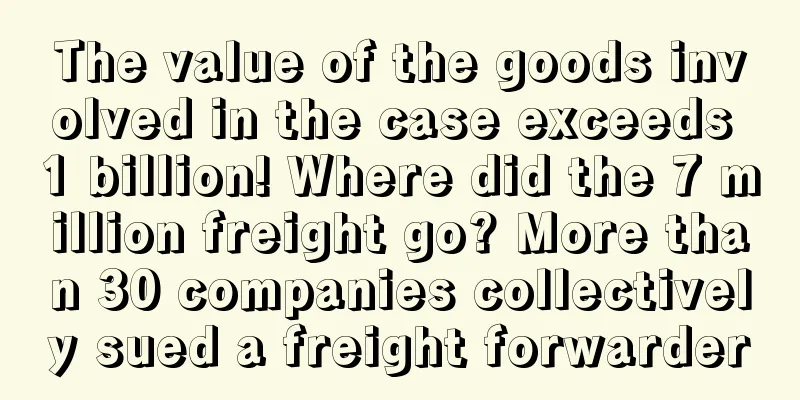What is Amazon India? Amazon India Review

|
Amazon India (www.Amazon.in) is India's leading e-commerce website, the most visited shopping website on local computers and mobile devices, and the most downloaded shopping app on mobile devices, and it continues to grow rapidly. About Amazon India The site has rich categories and numerous opportunities, with more than 400,000 sellers, more than 170 million products, covering more than 100 categories. Electronics account for the largest proportion, followed by clothing, with local and Western women's clothing as the main features. FBA distribution covers a wide range, with more than 50 warehouses across the country, basically able to deliver to all postal code coverage areas in India, and up to 65% of orders are sent to second- and third-tier cities where physical shopping is underdeveloped. Market Overview 1. India has a population of 1.35 billion, the second most populous country in the world. With the development of the Internet, the number of Internet users has increased by 100 million each year since 2018, reaching 830 million in 2021; the huge population base is the foundation of India's e-commerce volume. 2. India's GDP has increased by more than 6% for six consecutive years, reaching 7.3% in 2018. Its GDP is basically equivalent to that of Britain and France. The rapid and stable economic growth has stimulated consumption upgrades and increased purchasing power. 3. In 2018, there were 1-1.2 million online transactions per day, which is expected to quadruple in 8 years to reach US$200 billion. In 2034, it will surpass the United States to become the second largest e-commerce country. 4. Due to the large land area and uneven regional development, local second- and third-tier cities lack physical shopping places, which provides an inherent advantage for e-commerce penetration. Shop opening costs Amazon India's store opening costs are mainly composed of three parts: 1. Referral fee (starting from 3% and varies depending on product type); 2. Fixed fees (variable according to price range); 3. Shipping charges (starting from Rs. 30, varies depending on volume and distance). Information required to enter the Indian site If sellers are interested in entering the Indian site, they should still follow the entry requirements given by the platform and the investment manager. The information is as follows: 1. Business license of the company; 2. Scanned copy of the legal person’s ID card or passport; 3. Email; 4. Mobile phone; 5. VISA credit card billing address and zip code; 6. VISA credit card number, expiration date, and cardholder name. Entry threshold To open a self-delivery store, sellers need to: 1. Have been operating well in other mature Amazon sites for more than 6 months; 2. The front and back of the Chinese company's business license and the legal representative's ID card; 3. Submit a tax declaration (get the latest template from your account manager). To open an FBA store, sellers need to have Indian company qualifications. Chinese sellers can obtain the contact information of third-party service providers currently providing such services from their account managers, and learn more about the characteristics and risks of this model. Amazon account registration process Currently, Amazon India does not support self-registration by Chinese sellers. You must contact the Indian site investment manager and join with the invitation of the investment manager. If you have already opened a company in India, you can fill in the application information on the website. The detailed process is as follows: Step 1: Open the www.amazon.in website and click “sell on amzon” at the bottom of the homepage. Step 2: Arrive at the registration page and click "Start Selling". Step 3: Register a seller account. Fill in your name, phone number (India), email address and set a password. Click "Continue" Step 4: Fill in the company name and check the seller agreement. Step 5: Fill in your mobile phone number (within India) and click "send sms" to receive the verification code. After entering the verification code, you will automatically be redirected to the page to complete the seller information. Step 6: Fill in the tax details. If you have a GST number, click "Yes" and continue. Next, fill in the GST code and PAN card. If you don’t have it yet, check “i will update later” so you can add it later. Step 7: Select product category. After selecting the product type, the Amazon account registration is completed. FAQ Q: I heard that India's tax rates are quite complicated. Where can I find the exact tariffs and GST? Will the tax rate adjustment affect Chinese sellers? A: For Chinese sellers in cross-border e-commerce, tariff adjustments will indeed affect costs and pricing, but the biggest advantage of Chinese sellers is a strong and complete supply chain, as well as high-quality and low-priced products. Indian tariffs can be queried through the tax rate calculator of the Central Board of Indirect Taxes and Customs of India. Enter the CTH number of the imported goods or search for keywords to find the tariff rate, IGST rate and total tax rate of the relevant goods. Q: I heard that there are many ways to enter Amazon India? If I choose the FBA model, do I need to find a service provider? A: The Indian site supports both self-delivery and FBA. If you choose FBA, Chinese sellers need to consult a third-party service provider with resources to provide relevant services. Please ask your Amazon account manager for information on service providers that currently provide such services, and learn more about the characteristics and risks of this model. Q: Can I transfer my own shipping account to an FBA account? A: It is not possible to convert directly. For Chinese sellers, self-fulfillment and FBA are two different models. The self-fulfillment model is to conduct business as a Chinese company, while the FBA model is to conduct business as an Indian company. If the seller has opened a self-fulfillment account in the early stage and is still interested in trying FBA, it is recommended to consult the account manager. Q: Is the return rate on Amazon India very high? A: The return rate varies according to the category, and the return rate under the FBA model is significantly lower than that under the MFN model. The return rate of the Indian site is indeed slightly higher than that of other mature sites. The main reason is that the overall logistics environment in India is not mature enough, resulting in the inability to deliver. However, FBA sellers do not need to worry. First of all, the costs incurred by returns due to the inability to deliver do not need to be borne by the seller; secondly, under the FBA model, the return rate of products from China is no different from that of local Indian products. Product quality, accuracy of page descriptions, and timely updating of logistics information are the fundamental factors to ensure the return rate. Q: I heard that I can use US brand registration to protect products on the Indian site? A: Generally speaking, if sellers want to apply for brand registration in India, they need to apply for trademark registration in India first (the application time is usually 9 months to one year). In order to protect the rights of sellers who have created brands on other sites but have not registered trademarks in India, we currently allow sellers to authorize brand registration on other sites to the Indian site through "role assignment". Note: It is not to use the brand registration information of other sites to file in the Indian site, but to authorize it to the Indian site. The advantages of successful authorization are: 1. Protect the brand and prevent and combat counterfeit goods; 2. Allow sellers to create detailed pictures and text pages. If sellers want to fundamentally protect their brands, they still need to apply for trademark registration in India so that they can register their brands on the Indian site. Q: What categories are not allowed on the Indian site? A: The following restricted categories cannot be sold on the Indian site: 1. Adult products. 2. Purely electric products, such as batteries or products containing batteries, etc. (The Indian site allows sales, but many logistics companies do not carry them. If you can solve the logistics problem and meet the qualification review for the category launch, you can sell them.) 3. For other restricted products, please see the "Restricted Products in India" document in the Indian site seller backend help page for details. Q: Which products in India need to pass category review? A: There are three categories - beauty, watches, and pets. Sellers need to pass the category review before they can complete the creation. Please follow the instructions on the listing creation page. Sellers are usually asked to provide purchase invoices, brand authorization and other information. For the specific process, sellers can refer to the guidance of the corresponding category in the document "Restricted Products in India" "How to get approval for these restricted categories". Q: How does the Indian site collect payments? A: If you are a self-shipping seller, Amazon will convert rupees into US dollars and pay the seller. If you need to request information about third-party service providers that receive payments in US dollars, you can consult your account manager. If you are an FBA seller, Amazon will pay rupees, and the third-party service provider will pay the seller. You need to communicate with the third-party service provider for specific operations. Q: Can sellers sell through Amazon in markets outside India? A: No. Currently, Amazon.in only allows shipping within India. Sellers can sell in the US and UK through the Amazon Global Selling Program. Q: How do sellers collect payments on Amazon India? A: Amazon settles accounts once a week. The payment will be transferred to the Amazon seller account 7 days after the order is shipped. Q: What are the shipping logistics regulations of Amazon India? A: Amazon India currently supports 3 logistics methods: 1. Easy ship method: After receiving the order, the seller needs to pack the products, and then Amazon will collect the products at the door and deliver them to the customer. 2. FBA method: Amazon will store the seller's products in Amazon's warehouse, and pack and ship the products to the customer when the order is placed. 3. Self-delivery method: When shipping by yourself, the seller needs to be responsible for the entire shipping process. Including from printing the shipping number to sticking it on the parcel box, the package must be delivered on time or in advance. If the seller does not ship within 48 hours of the estimated delivery date, the order will be automatically canceled, and a cancellation fee of 2.5% of the order value will be required. |
<<: What is Fundable? Fundable Review
>>: What is Crowdfunder? Crowdfunder Review
Recommend
What is Symphony Commerce? Symphony Commerce Review
Symphony Commerce was founded in San Francisco in ...
What is TatuPay? TatuPay Review
Tatupay provides professional global payment colle...
Amazon's targeted policy has taken effect! Chinese sellers must pay attention!
Amazon recently issued a reminder that a policy t...
Walmart bans sales of pet breeding devices! This "pet breeding device" is at risk of being removed from shelves!
It is learned that under pressure from the People ...
Big Commerce and Mercado Libre reach cooperation! Officially enter the Latin American market
<span data-shimo-docs="[[20,"获悉,Big Commer...
Although the canal is open, logistics are still blocked! When will the freight rate increase stop?
Some time ago, the serious grounding accident in t...
China's "developing country treatment" has been cancelled! Just now, the United States officially announced...
The magical beginning of 2020 has caused foreign ...
Useful information! Amazon listing conversion rate optimization series: How to optimize listing images?
It can be frustrating to see your product underpe...
The "pandemic economy" has great potential! US online retail sales for the 2021 holiday season will reach $218 billion!
According to Deloitte's annual holiday retail ...
It's too hard to work at Amazon! Employees quit, boss jumps off building...
The sudden outbreak of this epidemic caught everyo...
Cross-border circle weekly headlines | Amazon has made new moves, and a batch of sellers’ links have been frozen!
Platform Knows 0 1 Amazon has made new moves. A b...
Affirm data reveals: What did Americans buy the most on Black Friday this year?
It is learned that on December 6, payment company ...
What is ShelfTrend? ShelfTrend Review
ShelfTrend allows you to search real-time market d...
What is the Global Shopping Knight Privilege? Global Shopping Knight Privilege Review
Global Shopping Knight Privileges is a membership-...
Etsy releases updated listing categories and attributes! Kitchenware sellers, please take note!
<span data-shimo-docs="[[20,"获悉,近日Etsy发布了2...









